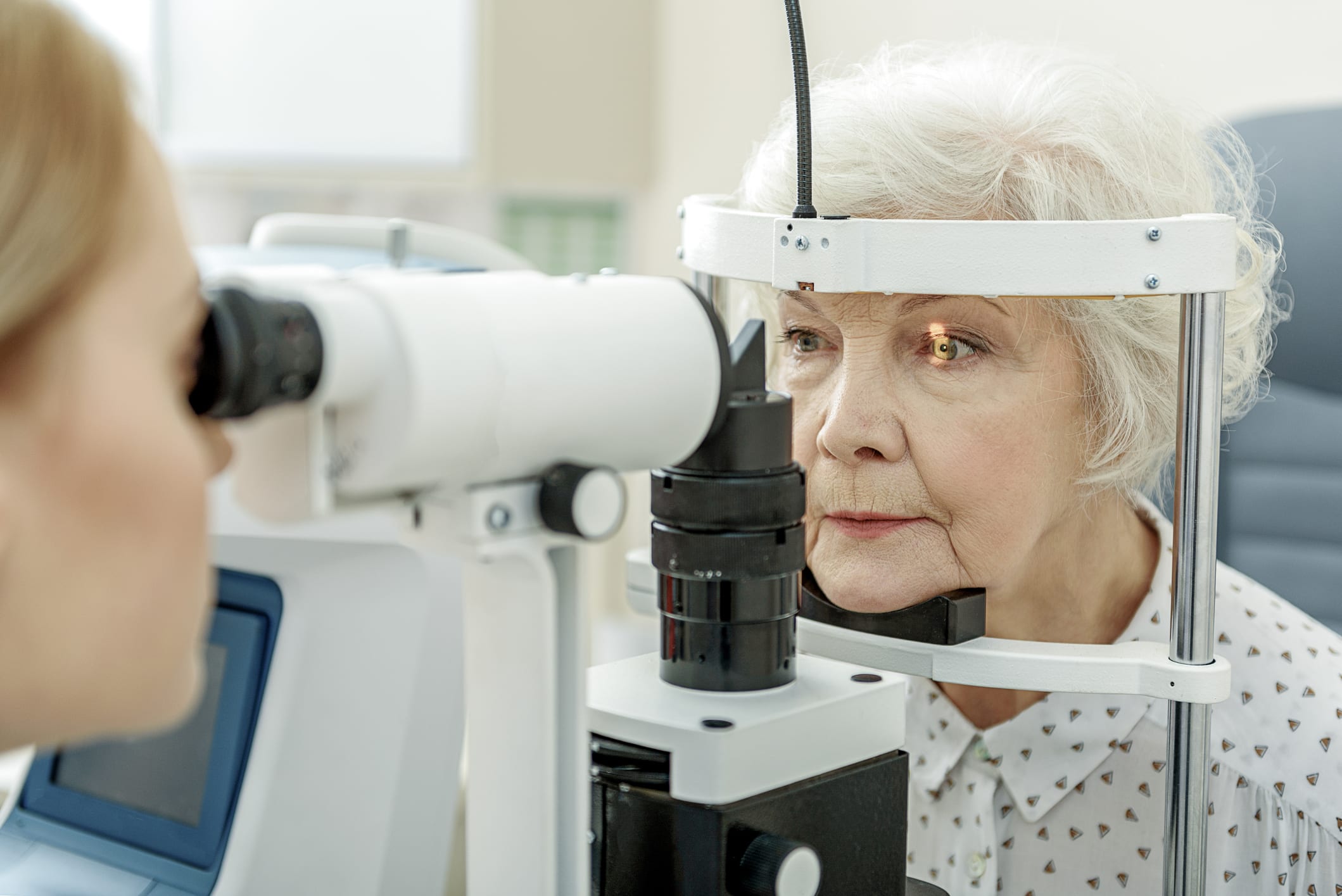Glaucoma can be broken down to specific medical terms for the “type” of disease present. Yes, “glaucoma” covers several sub-types. Here we’re providing you with an overview of the different types of glaucoma. If you have been recently diagnosed with glaucoma or have a blood relative with the disease (which increases your risk by 10 times), you may want to become familiar with the variety of its types. Regardless of the type of glaucoma you have, if left untreated, it can result in irreversible blindness. Our skilled and experienced doctors include those whose passion and focus is to offer the best available care to glaucoma patients. Increasing awareness that leads to a diagnosis is the first step!

Main Types of Glaucoma
Open-Angle Glaucoma
Most cases of glaucoma are Open-Angle Glaucoma. It is responsible for approximately 90 percent of all diagnosis. The drainage canals that meet your optic nerve at your brain entrance become clogged. Clogging causes escalated pressure in the eye and significantly decreases the healthy cleansing process used to nourish parts of your eye. You may feel great and not experience any changes in your vision, but sight loss occurs without treatment. Upon early detection, Open-Angle Glaucoma responds effectively to specific medicines. It is critical that you consistently adhere to your medication instructions to preserve healthy eye pressure and avoid vision loss.
Angle-Closure Glaucoma
Angle-Closure Glaucoma is another common type of the disease, also called narrow-angle glaucoma or closed-angle glaucoma. It is caused by the forward movement of the iris, obstructing the eye’s drainage channel and causing pressure to build. When the pressure is too high, it results in Angle-Closure Glaucoma.
Eye pressure escalation can happen suddenly or steadily and progressively increase. When the eye pressure accelerates quickly (referred to as acute angle-closure glaucoma) symptoms can include pain in your eye, blurred sight, clear or colored rings around lights and redness of the eye. You may also experience nausea or vomiting. An acute attack can result in irreversible damage to your sight. Seek medical attention immediately!
The more gradual type of angle-closure, chronic angle-closure glaucoma, typically does not have any symptoms and may only show up during your annual eye exam. The treatment for angle-closure glaucoma can include a laser procedure that produces a small opening in the outer edge of the iris using an advanced laser technique. Other methods of treatment can include prescription medicine to lower eye pressure.
Other Variations of Glaucoma
Most other variations of glaucoma are associated with open-angle or angle-closure glaucoma which can affect one or both of your eyes.
- Pigmentary Glaucoma is related to open-angle glaucoma. It is a result of a breakdown of the colored section of your eye – the iris. Small tinted particles drift into a stream toward the fluid drainage canals and over time obstruct them, resulting in a rising pressure of the eye.
- Congenital Glaucoma affects babies whose eye drainage canals were not correctly formed. It is uncommon, and can be inherited.
- Exfoliative Glaucoma is caused by a crumbling substance that is shed by the outer layer of the eye’s lens. These dandruff-like peelings collect and clog the eye’s drains, causing the pressure in the eye to increase. This type of glaucoma is also called to as pseudoexfoliative glaucoma.
- Normal-Tension Glaucoma is caused by damage to the eye’s optic nerve, but without elevated eye pressure. The cause of this type of glaucoma is unknown. Individuals with a family history and those of a Japanese heritage have an increased risk for this type of glaucoma.
- Secondary Glaucoma is typically caused by an injury to the eye, swelling or a tumor. It can also be a result of late-stage diabetes, cataracts or by taking medications such as steroids.
- Traumatic Glaucoma. Injury to the eye can cause traumatic glaucoma. This form of open-angle glaucoma occurs immediately after an injury or can develop years later. Blunt injuries that bruise the eye (called blunt trauma) or injuries that penetrate the eye can lead to traumatic glaucoma.
- Neovascular Glaucoma is when new blood vessels form over the drainage passages and on the iris itself and obstruct the drainage process which causes the eye pressure to escalate. This type of glaucoma is often found in individuals that have other health challenges, such as diabetes.
- Uveitic Glaucoma affects an inflamed uvea – the medical term for the middle layer of your eye. Your uvea handles most the blood flow to your retina. Uveitic glaucoma can be caused by a blunt trauma to the eye or medication such as a steroid.

Florida Eye Specialists and Cataract Institute’s highly-trained and skilled doctors are available to perform an extensive eye examination and, if you have glaucoma, explain all your options and respond to any questions you may have about glaucoma.


